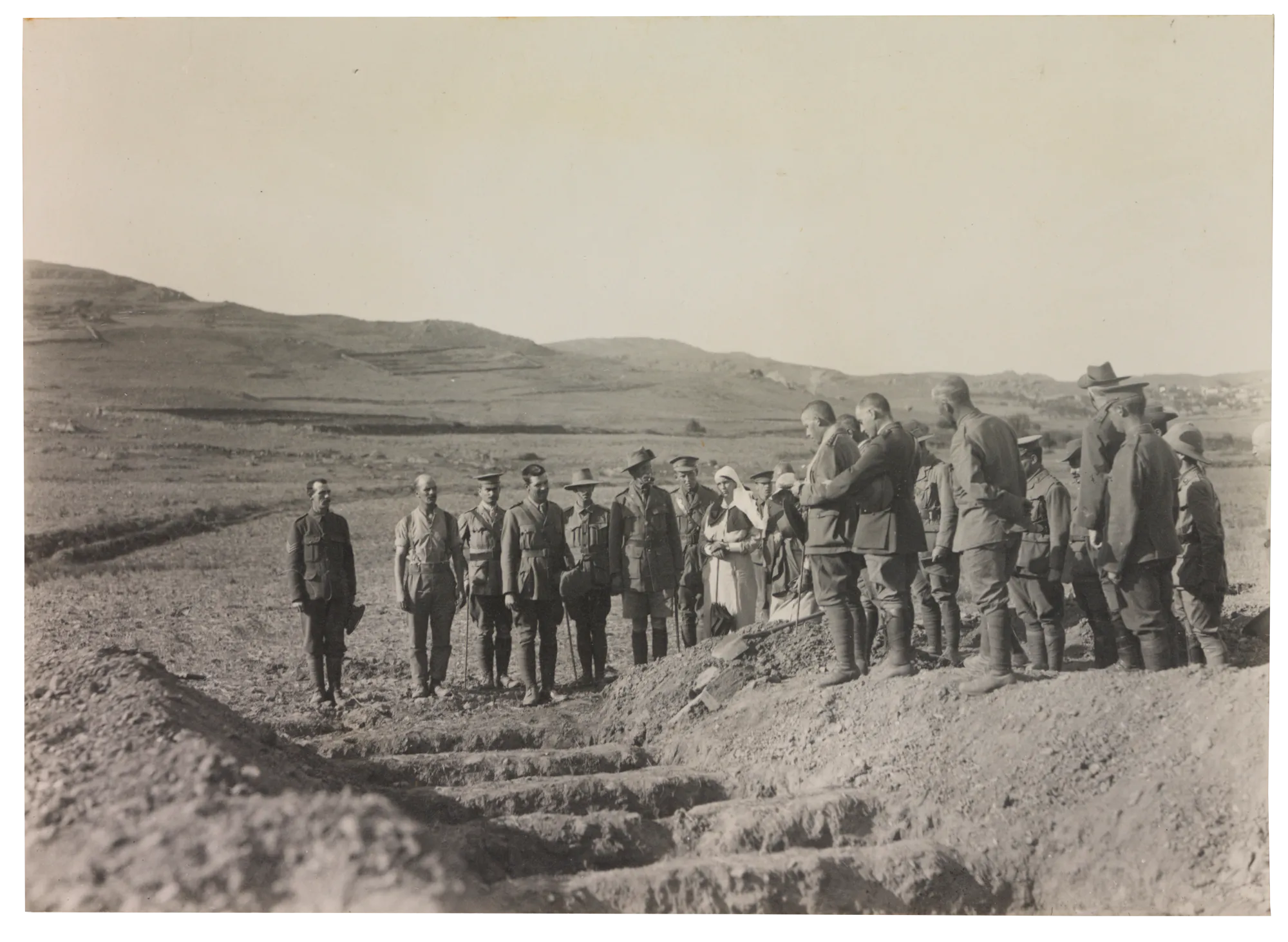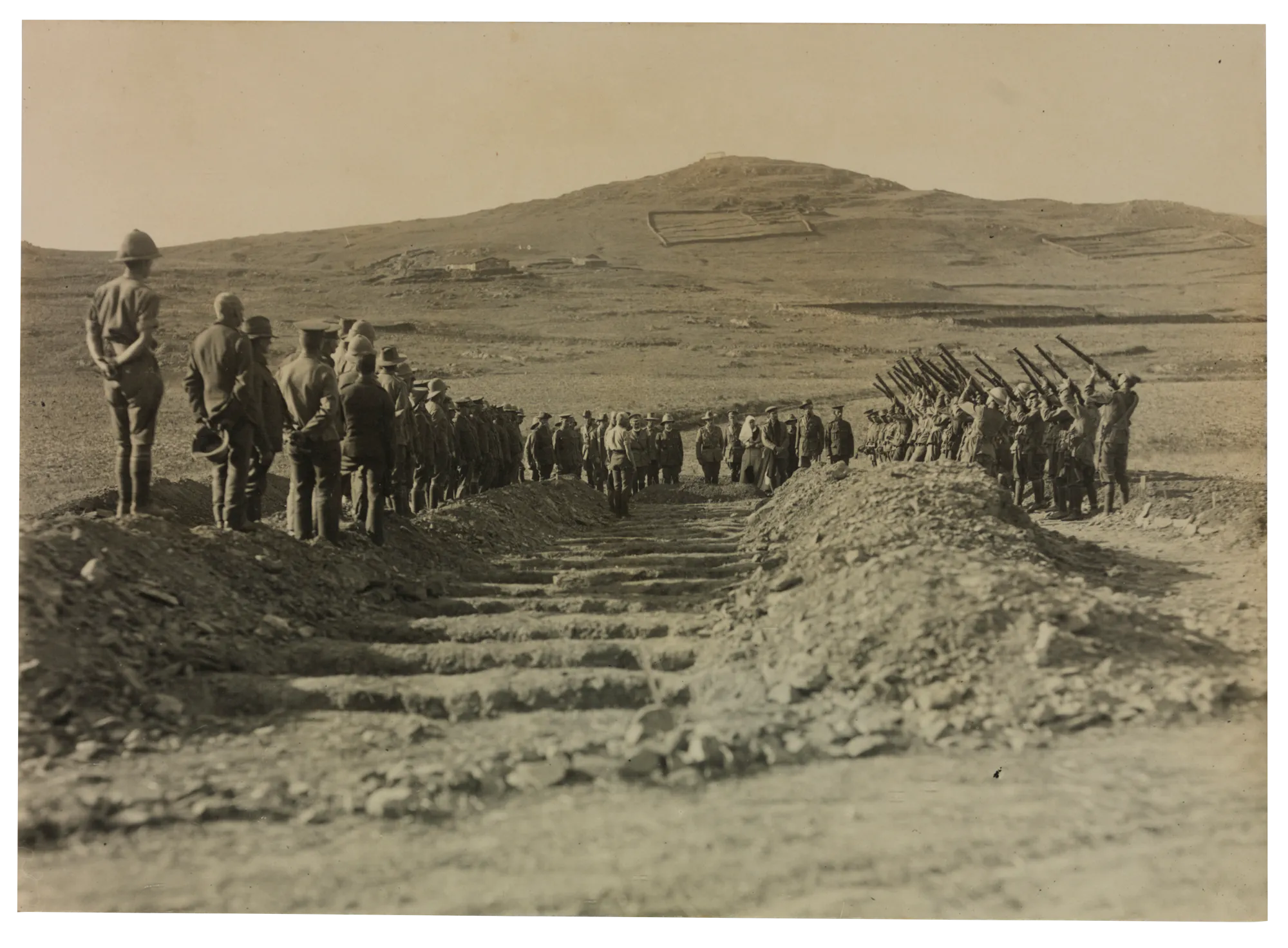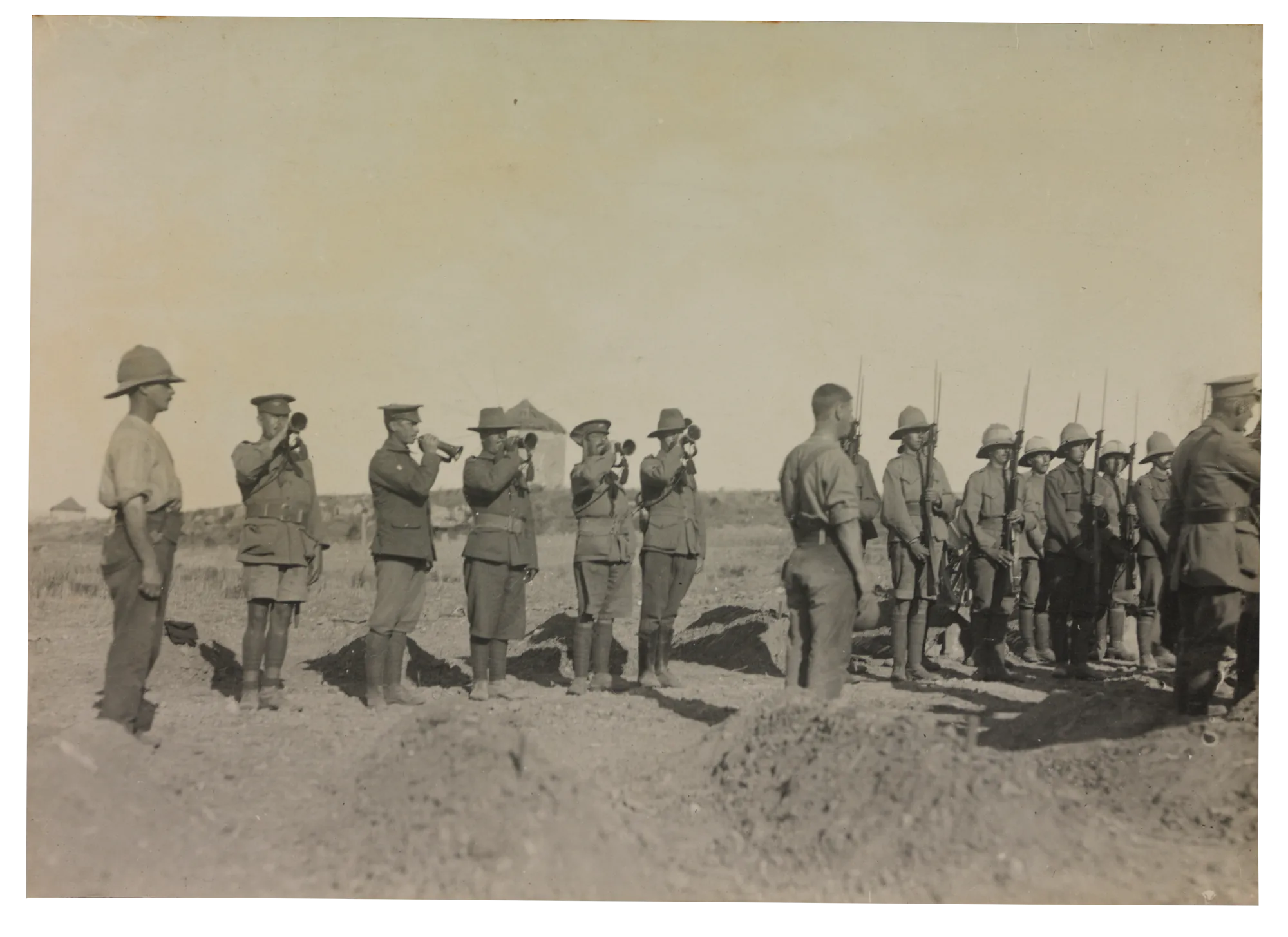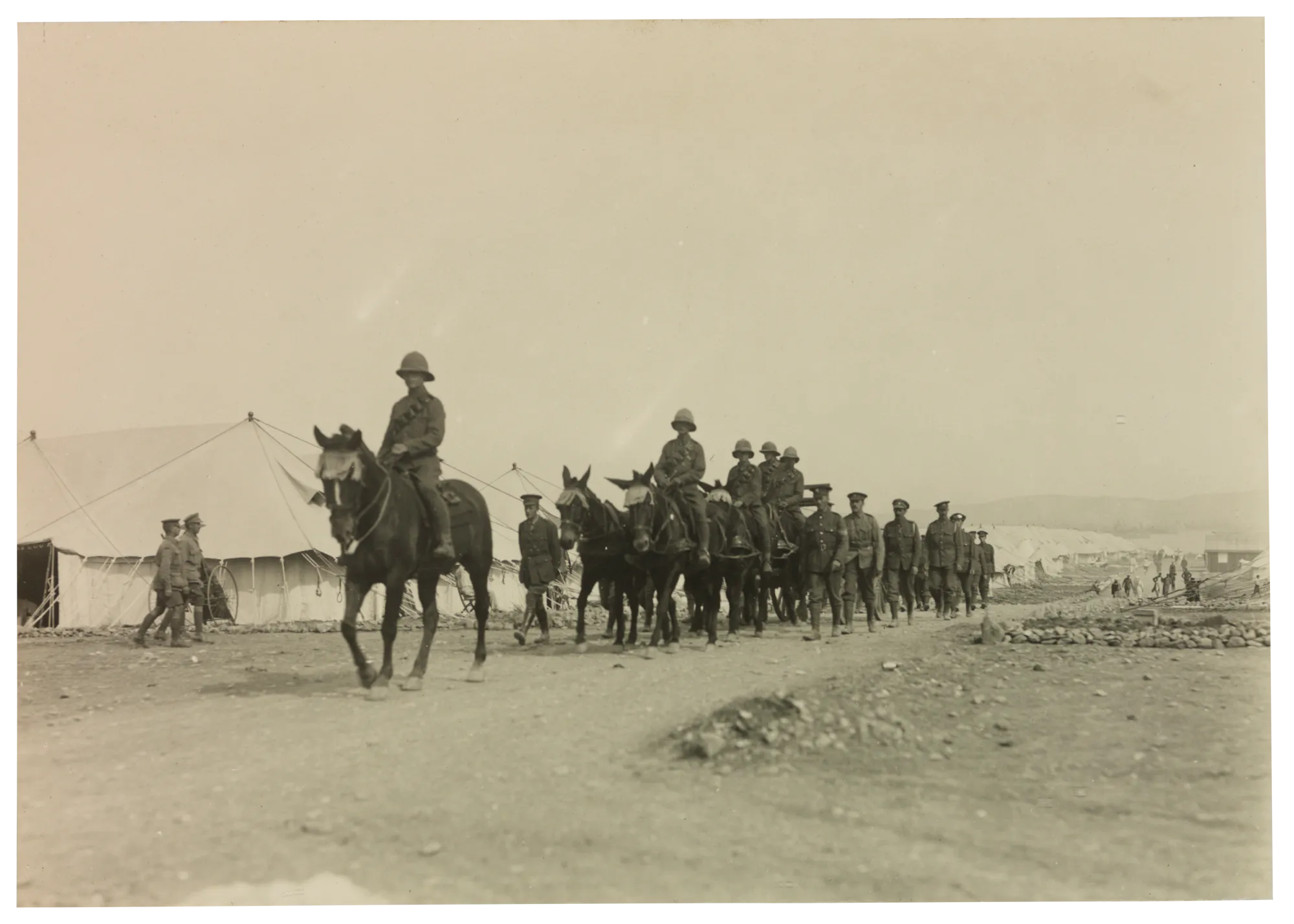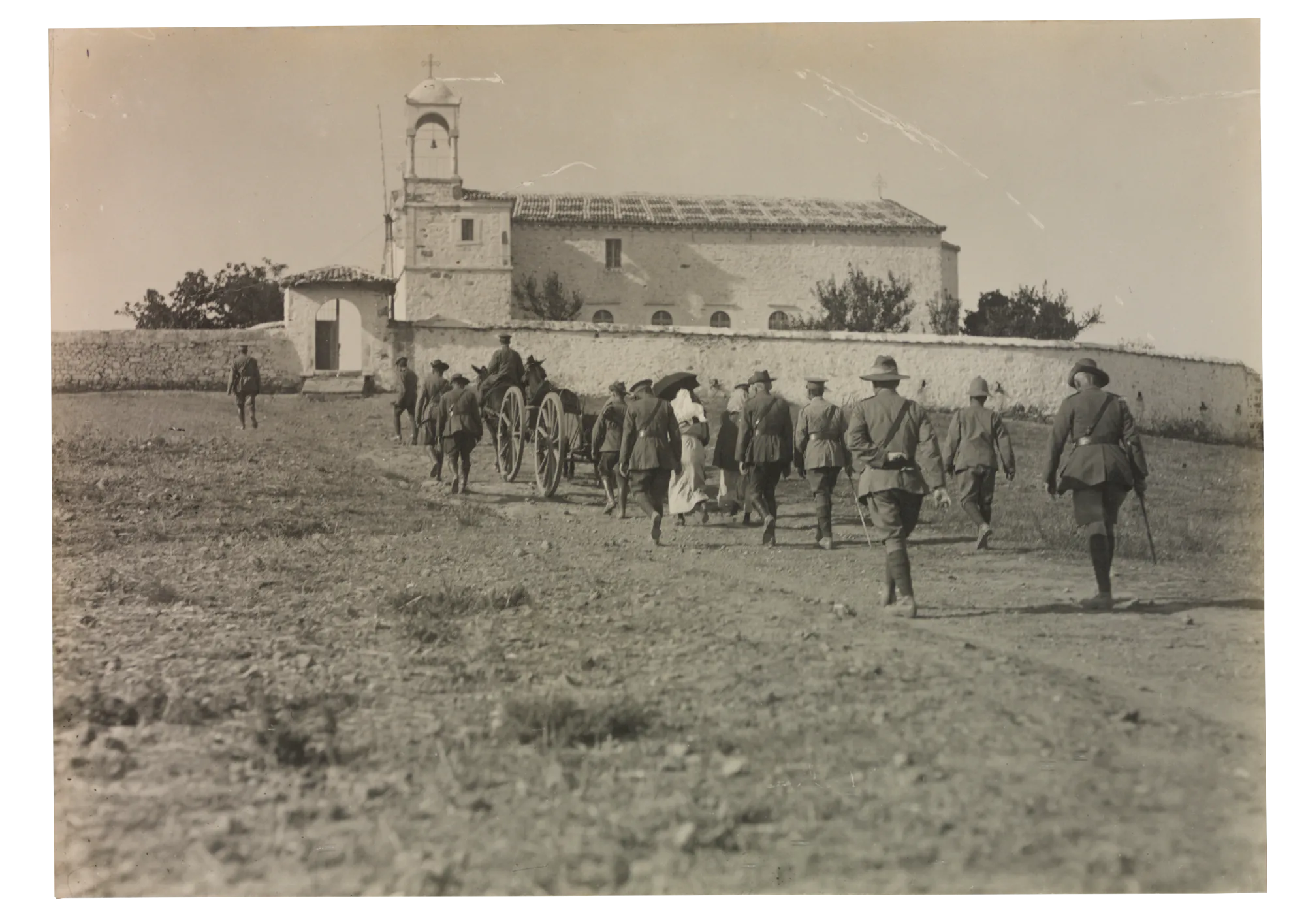
From early 1915, the peaceful Aegean isle became an extensive military camp. First, East Mudros was teeming with action. Then, in July, the focus shifted to West Mudros.
An array of construction transformed the island. Freshwater sources were found. Roads, piers, jetties, a system of navigational beacons and a light railway were built. And huts, tents and buildings were erected. Australian engineers and troops helped create this infrastructure.
Piers and jetties
Mudros Harbour was deep, but its shore waters shallow. The harbour did not have adequate landing facilities, resulting in the use of floating depot ships. Piers and jetties were essential to landing personnel and supplies, and so a series of them were constructed.
In early April the Australians immediately got to work building a stone and timber pier near their camp in East Mudros. The restored Australian Pier is part of the military heritage existing on Lemnos today. It gives truth to the words of Corporal G.E. Richards: ‘One thing the inhabitants will remember us by is a pier built by our engineers for our use. It is known as the Australian pier.’
Egyptian Pier was north of Australian Pier. The British and French, who also set up camp at East Mudros, built piers to the south of the town. Sports Pier was farther south again, close to Meganoros Point.
As the base expanded and many ships moved through the harbour, West Mudros evolved. Eleven piers and jetties were built on the northern and southern shores of Turks Head Peninsula. These were likely erected from July onwards and operated until the Allies left Lemnos in early 1916. Another two jetties were built next to Sarpi Rest Camp.
Communications
ROADWAYS
The expansion of the base at West Mudros included a road network to carry supplies, ambulances and personnel. On Turks Head Peninsula, the web of roads between piers, depots and facilities generally ran east–west.
The Egyptian Labour Corps and prisoners of war from the Ottoman Army made most of the roads. The Greek Labour Corps also contributed to road making in West Mudros.
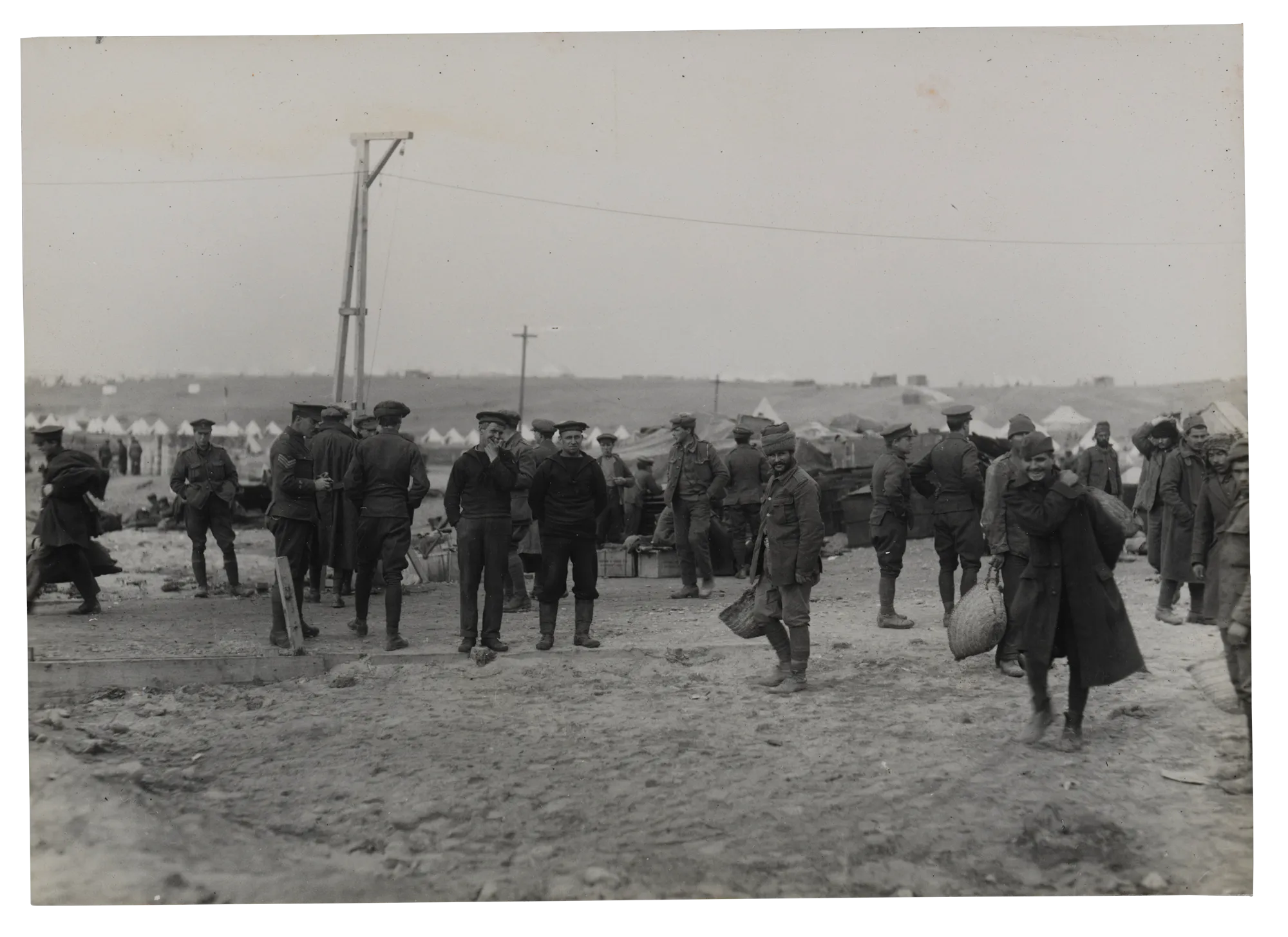
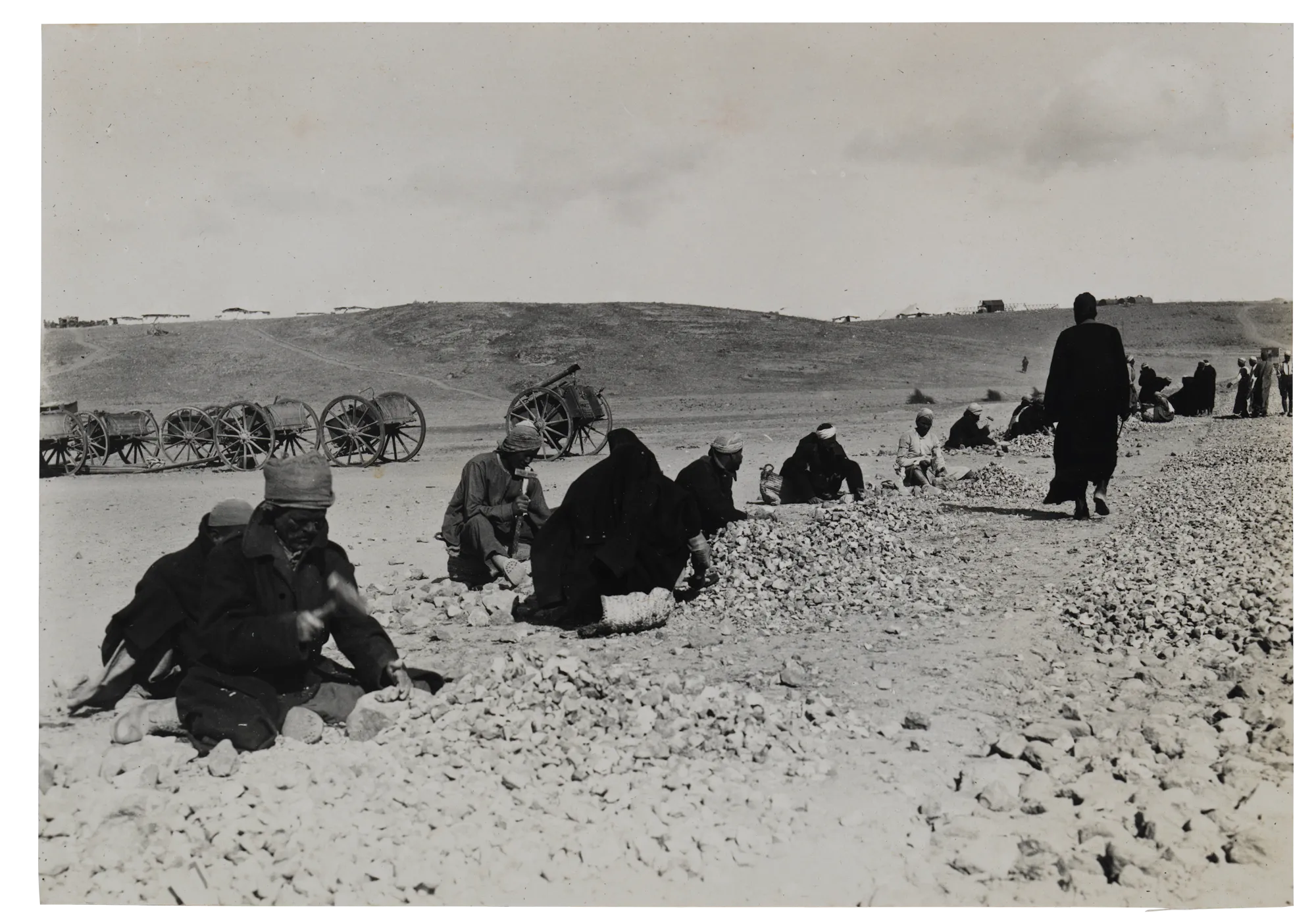

RAILWAY
A small-gauge light railway was used as supply transport on Turks Head Peninsula. The British 117th Railway Company Royal Engineers built and operated the railway line, pier and depot.
Nine locomotives, as well as lengths of track and supplies, came ashore at Railway Pier in September to complete the system. The tracks ran east–west to connect Railway Pier with the later-built stone Supply Pier, and a branch ran north to the causeway. Due to the Gallipoli campaign ending, the plans to extend the line to Kontias village, where there were army camps, did not eventuate.
‘[The] railway line is well on the way and a funny little train is being used. When the rails are ready, it is to go right around the Island’.
– Staff Nurse Lucy Daw, quoted in Lemnos and Gallipoli Revealed, p. 44
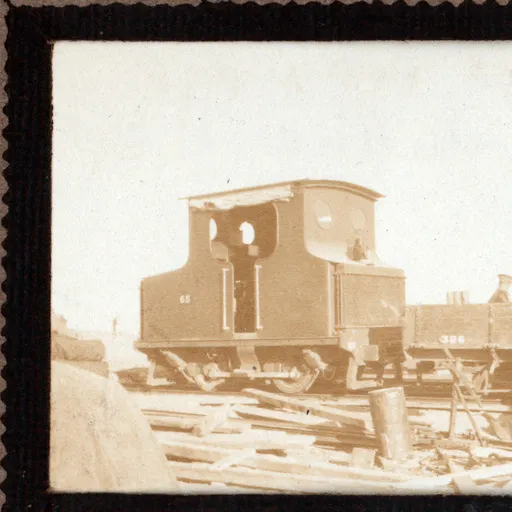
POST AND TELEGRAPH
To operate as an advanced military base, Lemnos required a secure and reliable communications system. It had to connect with Allied command and the force at Gallipoli, as well as with the outside world.
The military used the existing telegraphic cable at Lemnos’s capital, Castro (now Myrina), which linked with Athens and Mudros town. When wireless telegraphy was introduced in March, it greatly enhanced the Allied communication capability.
An Australian Army Postal Unit operated at Lemnos from May 1915 until January 1916. It was first stationed on the depot ship Aragon in the harbour but was later brought ashore. Once Sarpi Rest Camp was operating, mailbags were delivered to a post office there via Turks Head Peninsula.
The postal unit distributed mail to Imbros, Gallipoli and Alexandria. At a time when mail was the main form of communication, incoming letters from Australia were vital for buoying morale.
Staff handled hundreds of mailbags on Lemnos. Letters were delivered daily to Gallipoli, where word from home would have been welcome relief from the grind of battle.
‘There is nothing that cheers the soldiers up so much as letters from home. You see their eyes light up with pleasure as the postal orderlies toil up the hill with the mail bags. The postal corporal is the most popular man in the army.’
– ‘Trooper Bluegum’ (Lieutenant Oliver Hogue), Sydney Morning Herald, 15 Oct. 1915
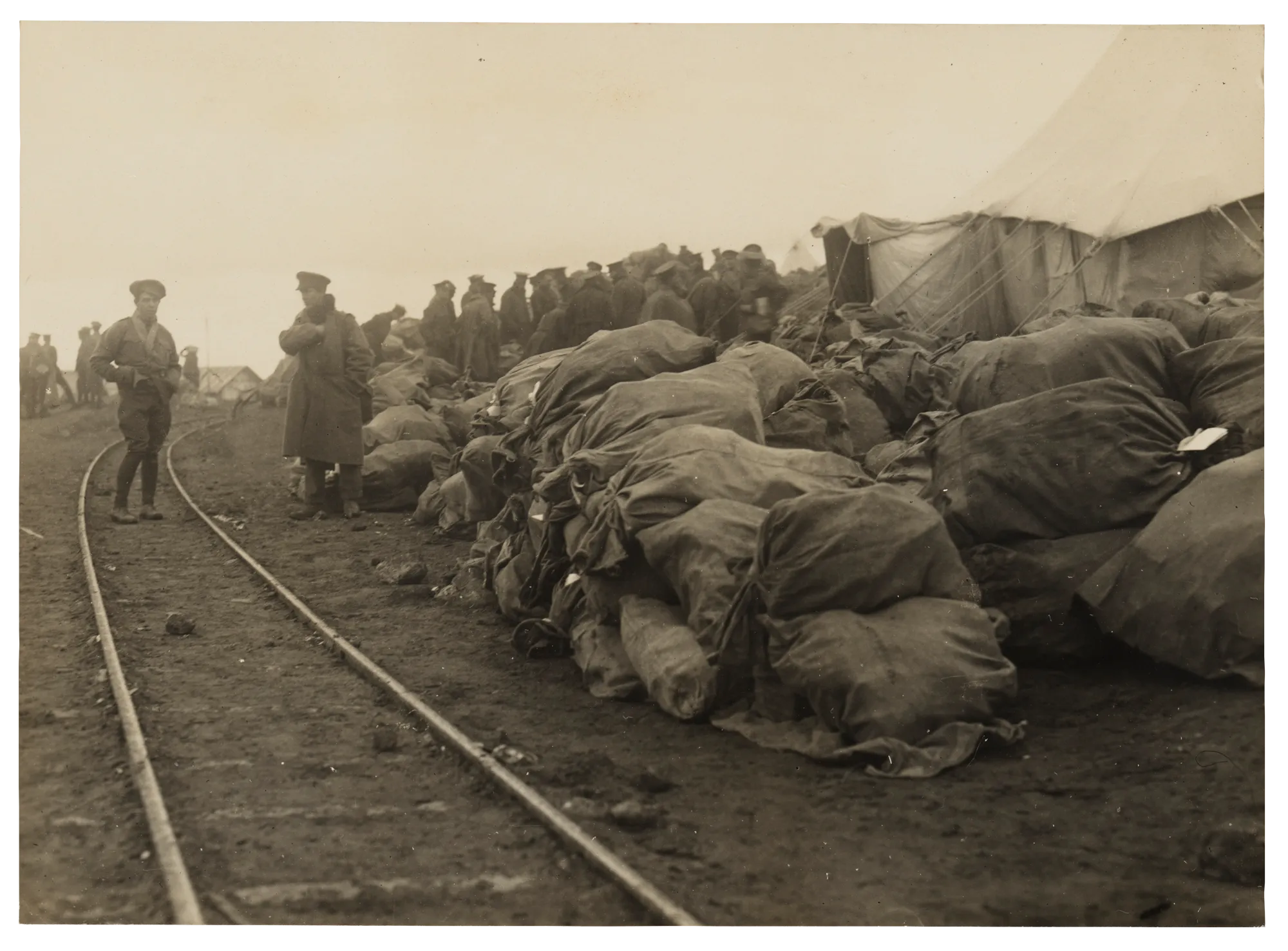
Food
The AIF’s ration system meant personnel should have adequate food, but certain conditions affected this. At Gallipoli, food often lacked range, quality and suitability. Without camp cooks and kitchens, troops had to prepare their own meals. Eventually, bread baked on nearby Imbros supplemented their diet.
Things were better on Lemnos. Still, when 3AGH arrived in August, nurses could find little more than bully beef, hard biscuits and sour bread to feed themselves and their patients. Staff Nurse Lucy Daw said the hospital kitchen ‘cooked abominably and served shockingly!’.
Photographs show field kitchens at West Mudros, and at Sarpi Rest Camp, bakers and butchers helped feed the troops and personnel. Hot meals were also prepared using travelling cookers loaned from frontline units. Compared with Gallipoli, the food may have appeared plentiful.
Sometimes locals visiting the camps sold goods such as oranges, walnuts and figs, just as they did in the villages. In time, however, authorities put a stop to trading in Sarpi Rest Camp. In November, the Red Cross established a canteen. And at one point, the padre set up a stall selling goods at cost, such as the currant rock cakes that he’d baked in the cook house.
‘I am better not eating than eating rotten food.’
– Sister Betha McMillan, letter, 28 Aug. 1915
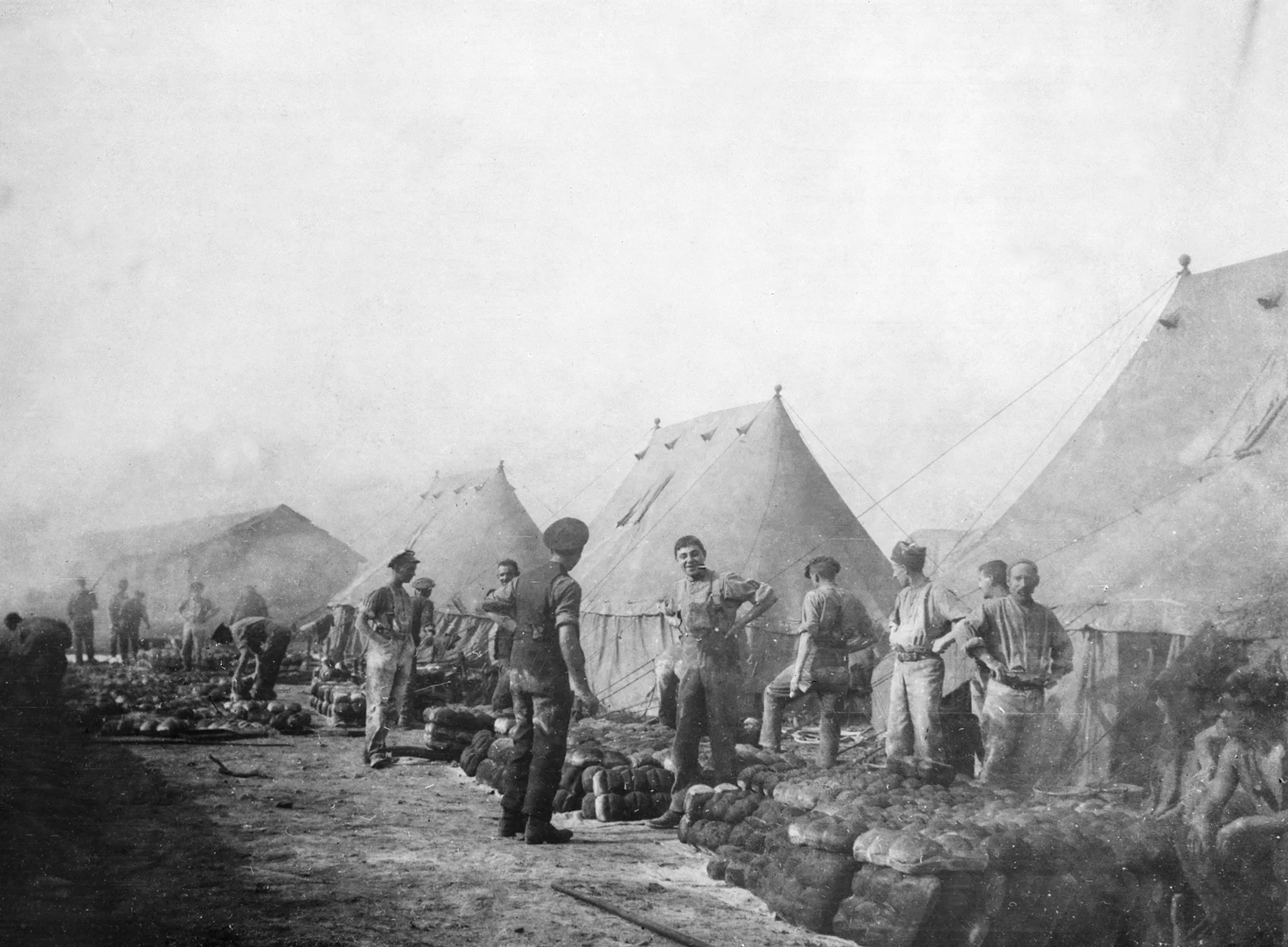
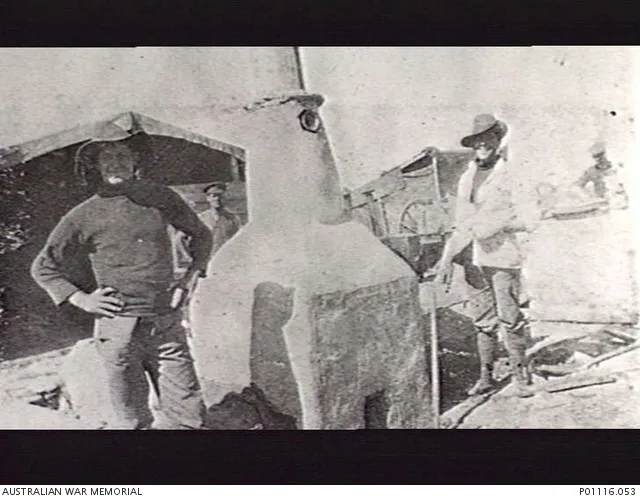
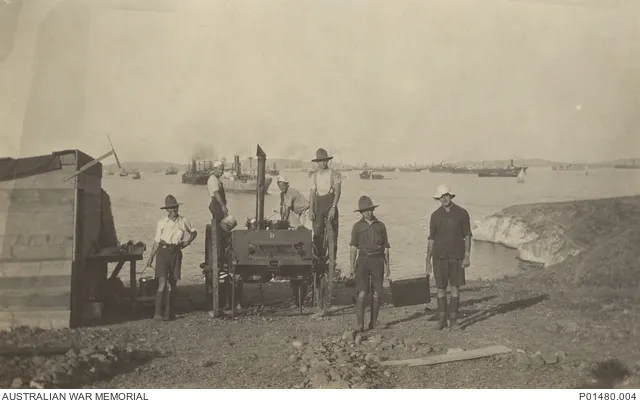
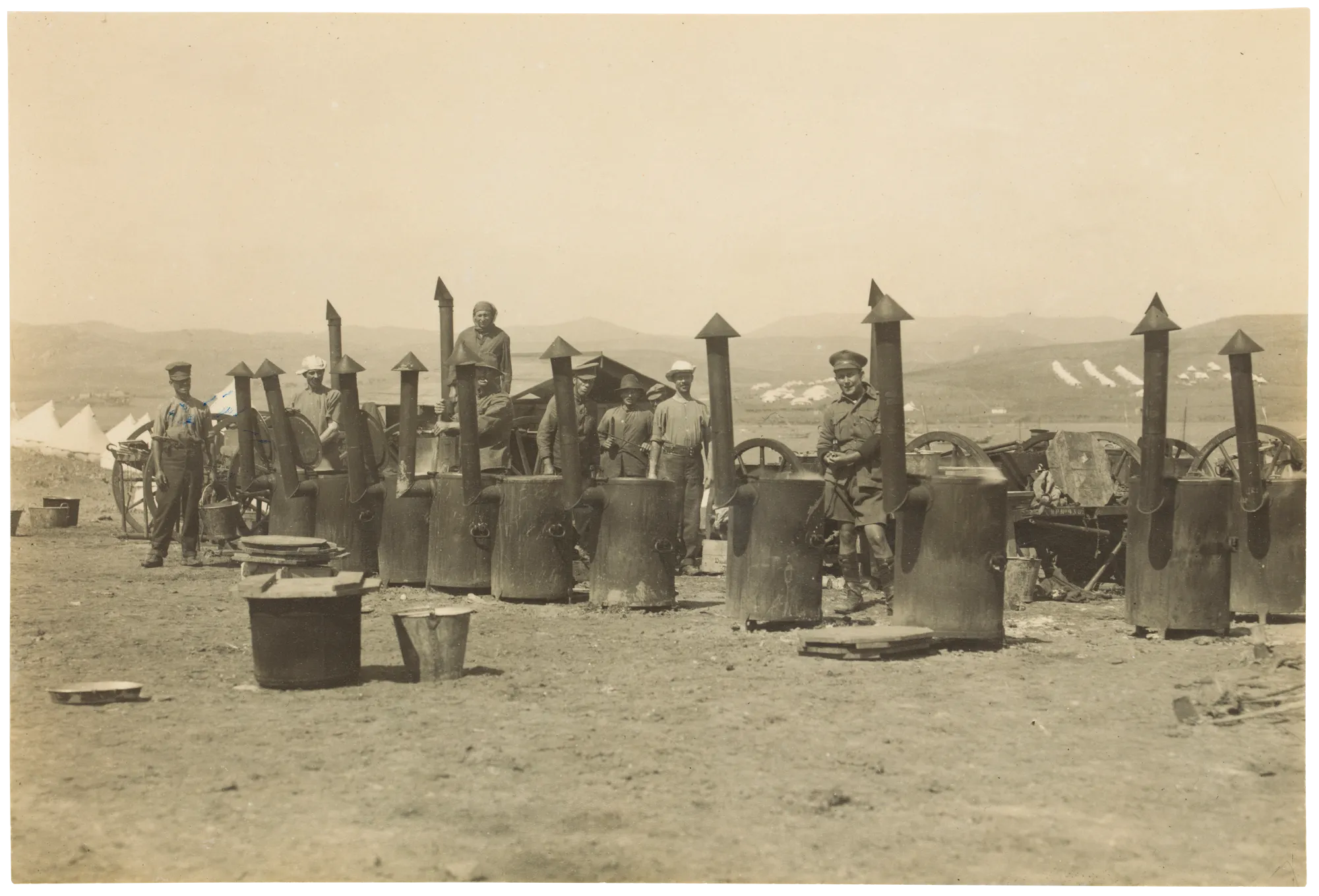
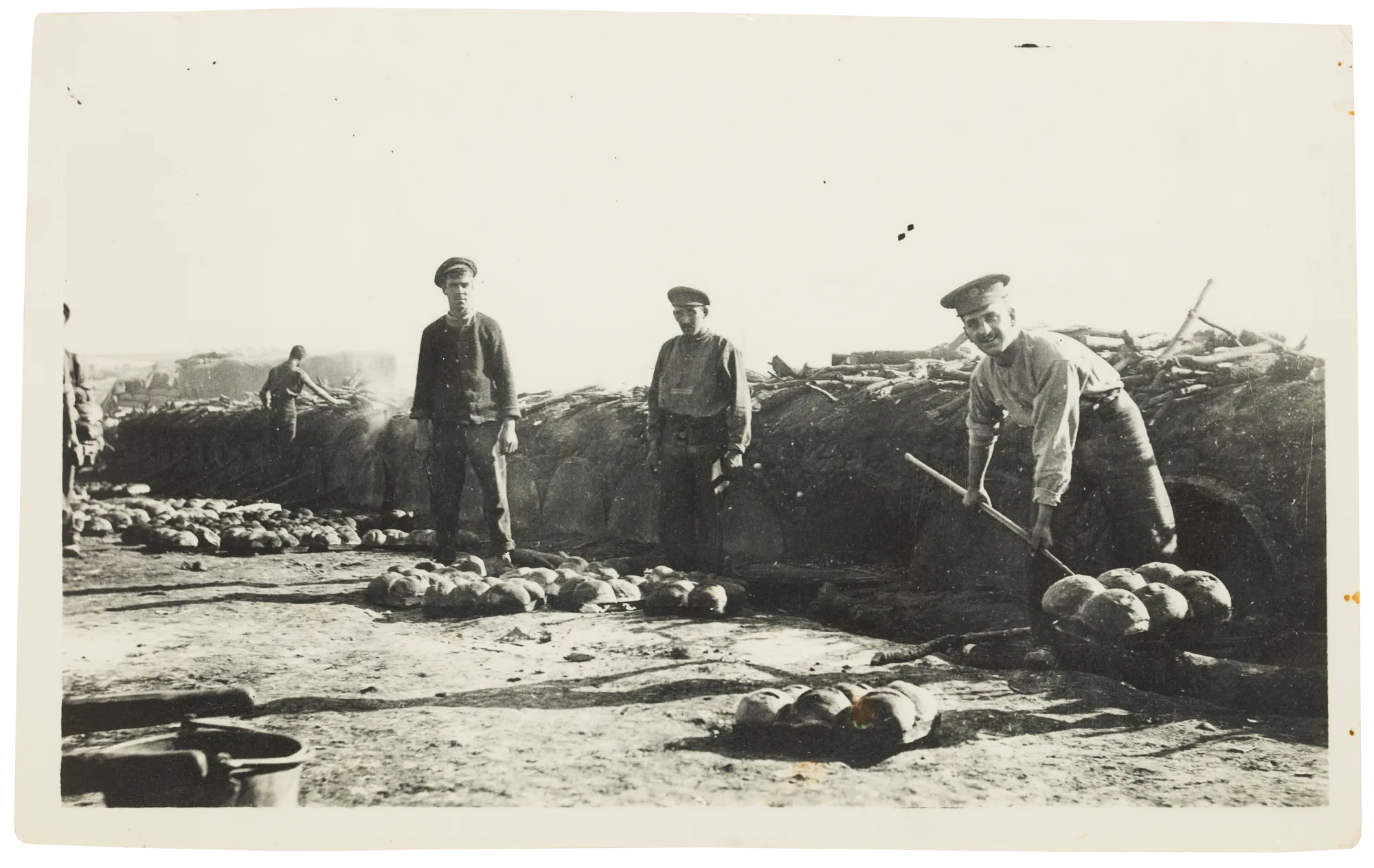
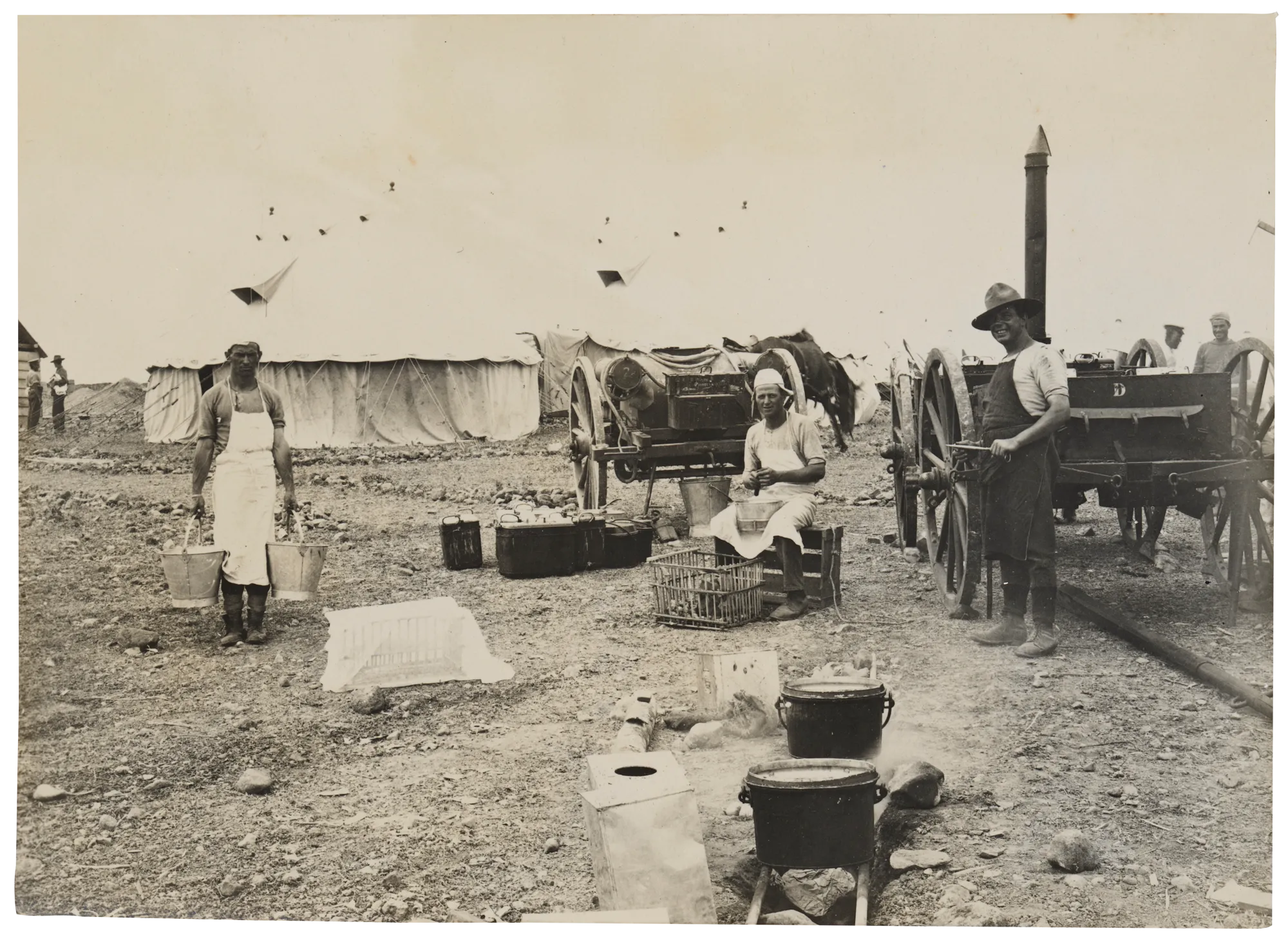
‘We don’t want for much.’
– Private Thomas Gardner, letter, 16 Sept. 1915
Burials and cemeteries
Even before the Gallipoli landings, five Australian deaths had occurred on Lemnos, their bodies laid to rest there. Infectious diseases were common and antibiotics still three decades away.
The East Mudros Military Cemetery operated from April 1915. Its 885 burials of individuals from Commonwealth countries include 98 Australians.
In July, Old Square Tower Military Cemetery was established south-west of Turks Head Peninsula, near the road to Tsimandria. A month later it was closed. Five British and four Australian soldiers were later reinterred at Portianos.
From August 1915, Portianos Military Cemetery operated until August 1920. It holds 347 Commonwealth graves, including 50 Australian, 29 New Zealand and 262 British graves. Three men from the Egyptian Labour Corps, one Turkish officer and two Canadian nurses are also buried there. More than half of the Australians in this cemetery lost their lives in the two months following the August offensive at Gallipoli.
Some 170 men of the Egyptian Labour Corps and 56 Turkish prisoners of war are buried at a Muslim cemetery in West Mudros.
An estimated 1,000 Australian soldiers were buried at sea in the waters off Lemnos and Gallipoli. This includes Private Harold Gard and Private James Martin. At just 14 years of age, Martin is believed to have been the youngest Australian soldier to serve at Gallipoli; he died of typhoid.
